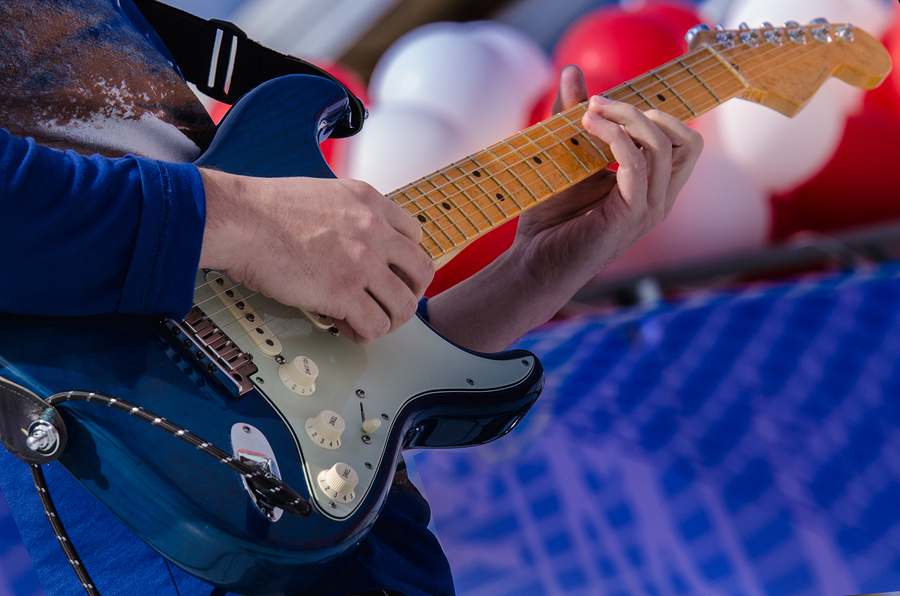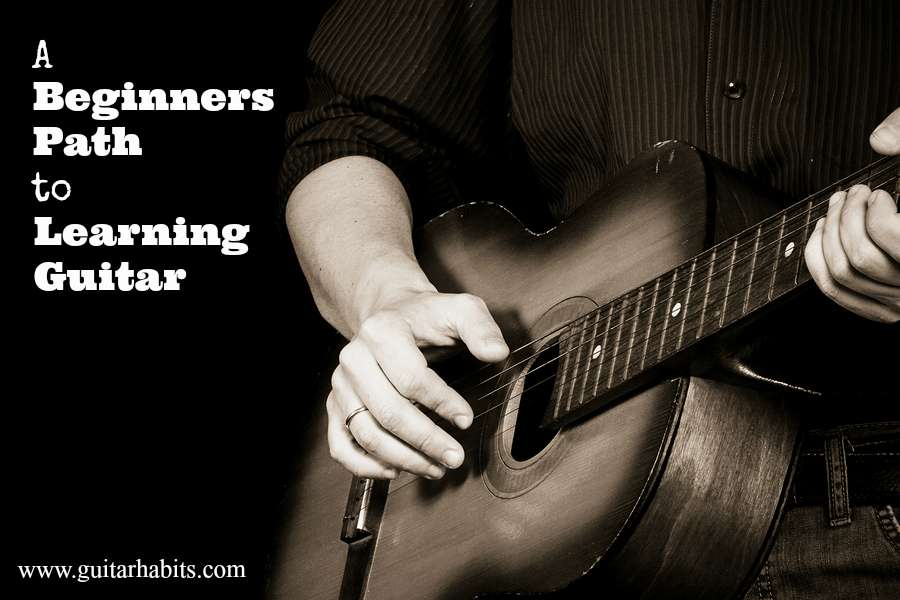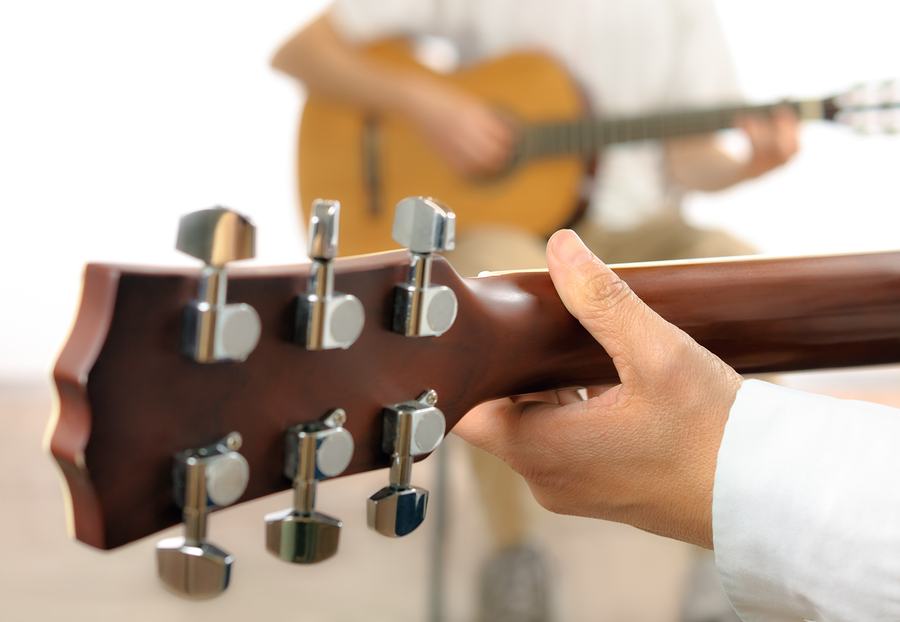Photo by Bigstock photo

But also rock guitar players like to step outside of the pentatonic or minor scale now and then and add this kind of middle eastern sound to their solos to keep things interesting.
It really catches the ear of the listener because something different and exciting is happening. John Petrucci, Joe Satriani and Marty Friedman are good examples of guitar players who incorporate the harmonic minor tastefully into their solos.
If you’re ready to add some cool flavor to play over a minor chord or dominant seventh chord then let’s dive into it:
Formulas
The harmonic minor scale contains 7 notes. The scale formula = 1 2 b3 4 5 b6 7. So compared to the major scale (1 2 3 4 5 6 7) it’s got a minor third and a minor sixth.
The harmonic minor scale and the natural minor scale (1 2 b3 4 5 b6 b7) are pretty much the same expect the harmonic minor has raised it’s 7th by one semitone.
If you play an harmonic minor scale on a single string the pattern of whole and half steps are:
“whole, half, whole, whole, half, whole & a half, half”.
(half step = 1 fret, whole step = 2 frets, whole & a half = 3 frets)
So the formula in semitones = 2 1 2 2 1 3 1
Here’s how you play an A harmonic minor scale. The root note starting on the 6th string (Low E-string)
Here’s the harmonic minor scale starting on the 5th string (A-string): D harmonic minor scale.Continue Reading



 We all want to practice at a regular basis. If only we could stick to it.
We all want to practice at a regular basis. If only we could stick to it.